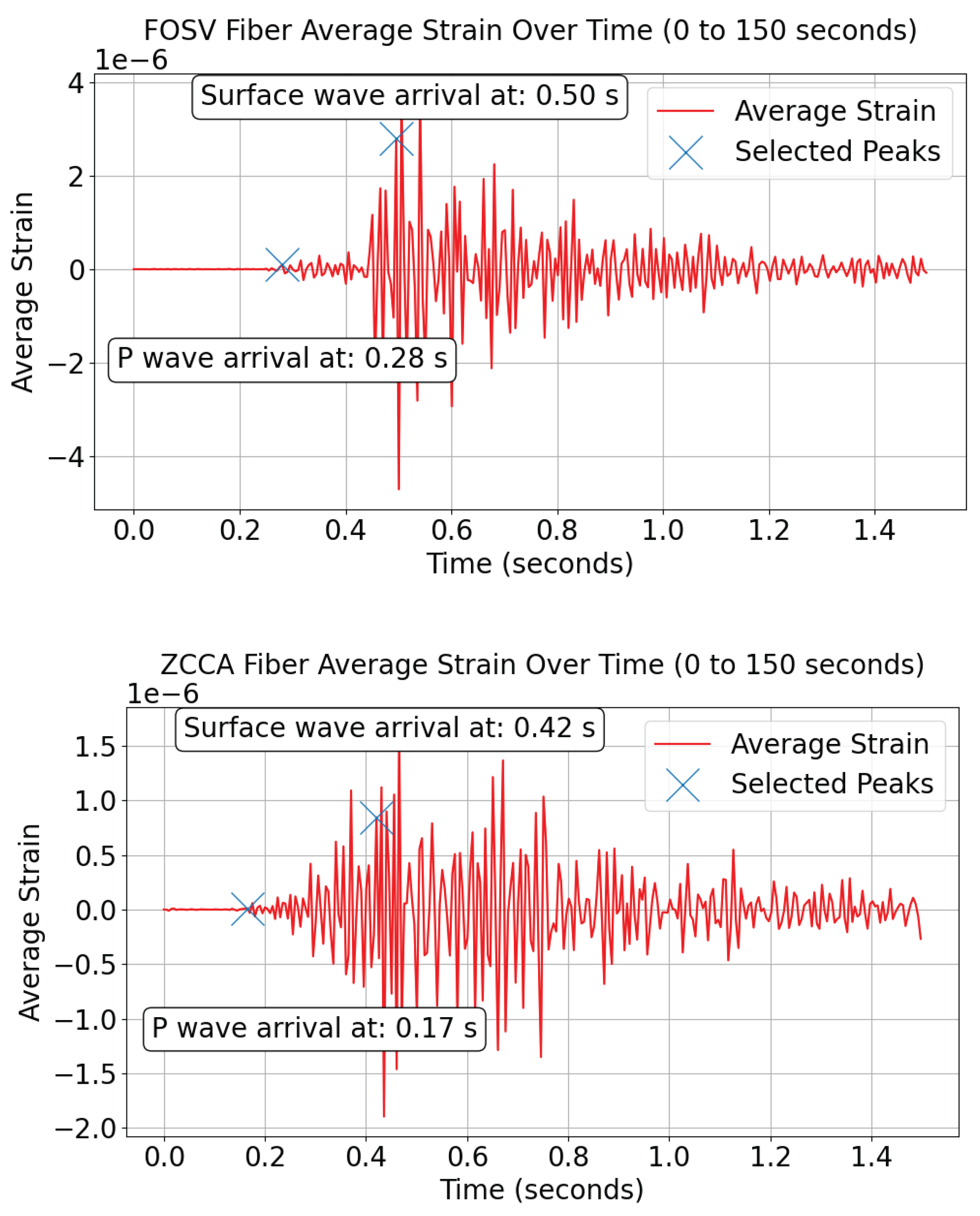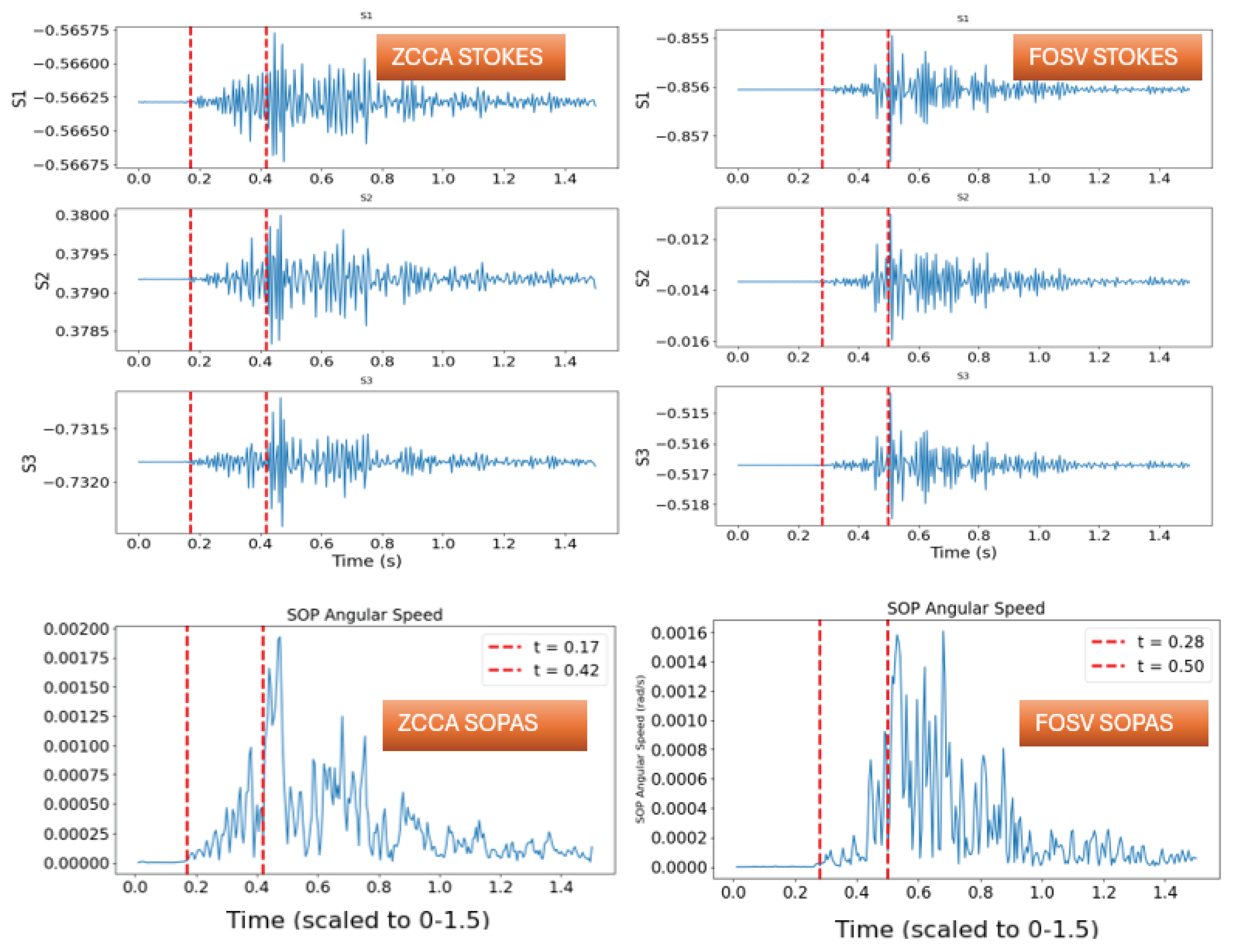Submitted:
12 March 2024
Posted:
15 March 2024
Read the latest preprint version here
Abstract
Keywords:
1. Introduction
2. Waveplate Model
3. Smart Sensing Grid Approach: In-Field Point-of-View
4. Neural Network Algorithm and Related Results
4.1. Case Scenario
4.2. Neural Network Model
4.3. Results and Discussion
5. Conclusions
Author Contributions
Funding
Data Availability Statement
Acknowledgments
Conflicts of Interest
Abbreviations
| SAFOD | San Andreas Fault Observatory at Depth |
| GPS | Global Positioning System |
| IASPEI | International Association of Seismology and Physics of the Earth’s Interior |
| P waves | Primary waves |
| S waves | Secondary waves |
| OTDR | Optical Time Domain Reflectometer |
| OFDR | Optical Frequency Domain Reflectometry |
| DAS | Distributed Acoustic Sensing |
| SOP | State of Polarization |
| SOPAS | State of Polarization Angular Speed |
| INGV | National Institute of Geophysics and Volcanology |
| CIA | Central Italian Apennines |
| ONC | Optical Network Controller |
| API | Application Programming Interface |
| NE | Network Element |
| ROADM | Re-configurable Optical Add-Drop Multiplexer |
| TRX | Transceiver |
| OSC | Optical Supervisory Channel |
| IM-DD | Intensity Modulated-Direct Detected |
| PBS | Polarization Beam Splitter |
| LSTM | Long Short - Term Memory |
Appendix A. Waveplate Model Theory
Appendix B. State of Polarization Angular Speed (SOPAS) Theorem
References
- He, M.; Ren, S.; Tao, Z. Cross-fault Newton force measurement for Earthquake prediction. Rock Mechanics Bulletin 2022, 1, 1–20. [Google Scholar] [CrossRef]
- Lin, W.; Conin, M.; Moore, J.; Chester, F; Nakamura, Y.; Mori, J; Anderson, L; Brodsky, E. Stress State in the Largest Displacement Area of the 2011 Tohoku-Oki Earthquake. Science 2013, 339, 687–690. [Google Scholar] [CrossRef] [PubMed]
- Hickman, S; Zoback, M. Stress orientations and Magnitudes in the SAFOD Pilot Hole. Advanced Earth and Space Sciences 2004, 31, 1–4. [Google Scholar] [CrossRef]
- Ishii, H.; Asai, Y. Development of a Borehole Stress Meter for Studying Earthquake Predictions and Rock Mechanics, and Stress Seismograms of the 2011 Tohoku Earthquake (M 9.0). SpringerOpen 2015, 67, 1–15. [Google Scholar] [CrossRef]
- Gladwin, M. High-Precision Multicomponent Borehole Deformation Monitoring. American Institute of Physics 1984, 55, 2011–2016. [Google Scholar] [CrossRef]
- Wu, M; Zhang, C; Fan, T. Stress State of the Baoxing Segment of the Southwestern Longmenshan Fault Zone before and after the Ms 7.0 Lushan Earthquake. Asian Earth Sciences 2016, 121, 9–19. [Google Scholar] [CrossRef]
- Jinlai, X; Zhaohua, X. Infrasound waves caused by earthquake on 12 July 1993 in Japan. Acta Acustica 1996, 12, 55–61. [Google Scholar]
- Allen, R; Kanamori, H. The Potential for Earthquake Early Warning in Southern California. Science 2003, 300, 786–789. [Google Scholar] [CrossRef]
- Geller, R; Jackson, D; Kagan, Y; Mulargia, F. Earthquakes Cannot Be Predicted. Science 1997, 275, 1616. [Google Scholar] [CrossRef]
- Jordan, T.; Chen, Y.; Gasparini, P.; Madariaga, R.; Main, I.G.; Marzocchi, W.; Papadopoulos, G.A.; Sobolev, G.A.; Yamaoka, K.; Zschau, J. Operational Earthquake Forecasting: State of Knowledge and Guidelines for Utilization. Annals of Geophysics 2011, 54, 316–391. [Google Scholar]
- Mecozzi, A; Antonelli, C; Mazur, M; Fontaine, N; Chen, H; Dallachiesa, L; Ryf, R. Use of Optical Coherent Detection for Environmental Sensing. Journal of Lightwave Technology 2023, 41, 3350–3357. [Google Scholar] [CrossRef]
- Mazur, M; Parkin, N; Ryf, R; Iqbal, A; Wright, P; Farrow, K; Fontaine, N; Börjeson, E; Kim, K; Dallachiesa, L; Chen, H; Larsson-Edefors, P; Lord, A; Neilson, D. Continuous Fiber Sensing over Field-Deployed Metro Link using Real-Time Coherent Transceiver and DAS. In Proceedings of the European Conference on Optical Communication (ECOC), Basel, Switzerland, (18 September 2022);
- Kulhánek, O. Seismic Waves. In Anatomy of Seismograms, 1st ed; Elsevier Science: Amsterdam, Netherlands, 1990. [Google Scholar]
- Fernández-Ruiz, M; Soto, M; Williams, E; Martin-Lopez, S; Zhan, Z; Gonzalez-Herraez, M; Martins, H. Distributed Acoustic Sensing for Seismic Activity Monitoring. APL Photonics 2020, 5, 1–16. [Google Scholar] [CrossRef]
- Boffi, P. Sensing Applications in Deployed Telecommunication Fiber Infrastructures. In Proceedings of the European Conference on Optical Communication (ECOC), Basel, Switzerland, (18 September 2022). [Google Scholar]
- Eiselt, M.; Azendorf, F.; Sandmann, A. Optical Fiber for Remote Sensing with High Spatial Resolution. In Proceedings of the EASS 2022; 11th GMM-Symposium, Erfurt, Germany, (05 July 2022). [Google Scholar]
- Fichtner, A.; Bogris, A.; Nikas, T.; Bowden, D.; Lentas, K.; Melis, N.S.; Simos, C.; Simos, I.; Smolinski, K. Theory of Phase Transmission Fibre-Optic Deformation Sensing. Geophysical Journal International 2022, 231, 1031–1039. [Google Scholar] [CrossRef]
- Guerrier, S. High Bandwidth Detection of Mechanical Stress in Optical Fibre Using Coherent Detection of Rayleigh Scattering. PhD Thesis, Institut polytechnique de Paris, Paris, France, 03 February 2022. [Google Scholar]
- Dong, B; Popescu, A; Tribaldos, V; Byna, S; Ajo-Franklin, J; Wu, K. Real-Time and Post-Hoc Compression for Data from Distributed Acoustic Sensing. Computers & Geosciences 2022, 166, 1–22. [Google Scholar]
- Lellouch, A; Yuan, S; Ellsworth, W; Biondi, B. Velocity-based Earthquake Detection using Downhole Distributed Acoustic Sensing—Examples from the San Andreas Fault Observatory at Depthvelocity-based Earthquake Detection using Downhole Distributed Acoustic Sensing. Bulletin of the Seismological Society of America 2019, 109, 2491–2500. [Google Scholar] [CrossRef]
- Marra, G; Clivati, C; Luckett, R; Tampellini, A; Kronjäger, J; Wright, L; Mura, A; Levi, F; Robinson, S; Xuereb, A; Bapite, B; Calonico, D. Ultrastable Laser Interferometry for Earthquake Detection with Terrestrial and Submarine Cables. Science 2018, 361, 486–490. [Google Scholar] [CrossRef] [PubMed]
- Cantono, M; Castellanos, J; Batthacharya, S; Yin, S; Zhan, Z; Mecozzi, A; Kamalov; V. Optical Network Sensing: Opportunities and Challenges. In Proceedings of the Optical Fiber Communication Conference (OFC) 2022; San Diego, California, United States, (06 March 2022).
- Barcik, P; Munster, P. Measurement of Slow and Fast Polarization Transients on a Fiber-Optic Testbed. OPTICA 2020, 10, 15250–15257. [Google Scholar] [CrossRef]
- Zhan, Z; Cantono, M; Kamalov, V; Mecozzi, A; Müller, R; Yin, S; Castellanos, J. Supplementary Materials for Optical Polarization–Based Seismic and Water Wave Sensing on Transoceanic Cables. Science 2021, 371, 931–936. [Google Scholar] [CrossRef]
- Zhan, Z; Cantono, M; Kamalov, V; Mecozzi, A; Müller, R; Yin, S; Castellanos, J. Optical Polarization–Based Seismic and Water Wave Sensing on Transoceanic Cables. Science 2021, 371, 931–936. [Google Scholar] [CrossRef]
- Curti, F; Daino, B; De Marchis, G; Matera, F. Statistical Treatment of the Evolution of the Principal States of Polarization in Single-Mode Fibers. Journal of Lightwave Technology 1990, 8, 1162–1166. [Google Scholar] [CrossRef]
- Pellegrini, S; Rizzelli, G; Barla, M; Gaudino, R. Algorithm Optimization for Rockfalls Alarm System Based on Fiber Polarization Sensing. IEEE Photonics Journal 2023, 15, 1–9. [Google Scholar] [CrossRef]
- Feigl, K. Overview and Preliminary Results from the PoroTomo Project at Brady Hot Springs, Nevada: Poroelastic Tomography by Adjoint Inverse Modeling of Data from Seismology, Geodesy, and Hydrology. In Proceedings of the 42nd Workshop on Geothermal Reservoir Engineering 2017; Stanford, California, United States, (13 February 2022). [Google Scholar]
- Italian National Institute of Geophysics and Volcanology (INGV). Available online: https://terremoti.ingv.it/en/event/36163811 (accessed on 20 February 2023).
- Herrman, R; Malagnini, L; Munafò, I. Regional Moment Tensors of the 2009 L’Aquila Earthquake Sequence. Bulletin of the Seismological Society of America 2009, 101, 975–993. [Google Scholar] [CrossRef]
- Bratovich, R; Martinez, F; Straullu, S; Virgillito, E; Castoldi, A; D’Amico, A; Aquilino, F; Pastorelli, R; Curri, V. Surveillance of Metropolitan Anthropic Activities by WDM 10G Optical Data Channels. In Proceedings of the European Conference on Optical Communication (ECOC) 2022; Basel, Switzerland, (18 September 2022).
- Virgillito, E; Straullu, S; Aquilino, F; Bratovich, R; Awad, H; Proietti, R; D’Amico, A; Pastorelli, R; Curri, V. Detection, Localization and Emulation of Environmental Activities Using SOP Monitoring of IMDD Optical Data Channels. In Proceedings of the 23rd International Conference on Transparent Optical Networks (ICTON) 2023; Bucharest, Romania, (02 July 2023).
- Straullu, S; Aquilino, F; Bratovich, R; Rodriguez, F; D’Amico, A; Virgillito, E; Pastorelli, R; Curri, V. Real-time Detection of Anthropic Events by 10G Channels in Metro Network Segments. In Proceedings of the IEEE Photonics Conference (IPC) 2022; Vancouver, Canada, (13 November 2022).
- Awad, H; Virgillito, E; Straullu, S; Bratovich, R; Rodriguez, F; Proietti, R; D’Amico, A; Aquilino, F; Pastorelli, R; Curri, V. Environmental Sensing and Localization via SOP Monitoring of IM-DD Optical Data Channels. In Proceedings of the Optica Sensing Congress 2023 (AIS, FTS, HISE, Sensors, ES) 2023; Munich, Germany, (30 July 2023).
- Jousset, P; Reinsch, T; Ryberg, T; Blanck, H; Clarke, A; Aghayev, R; Hersir, G; Henninges, J; Weber, M; Krawczyk, C. Dynamic Strain Determination using Fibre-Optic Cables Allows Imaging of Seismological and Structural Features. Nature Communications 2018, 9, 1–11. [Google Scholar] [CrossRef] [PubMed]
- Hochreiter, S; Schmidhuber, J. Seismic Waves. In Long Short-Term Memory, Neural Computation, MIT Press: Cambridge, Massachusetts, 1997; 9, pp.:1735–1780.









Disclaimer/Publisher’s Note: The statements, opinions and data contained in all publications are solely those of the individual author(s) and contributor(s) and not of MDPI and/or the editor(s). MDPI and/or the editor(s) disclaim responsibility for any injury to people or property resulting from any ideas, methods, instructions or products referred to in the content. |
© 2024 by the authors. Licensee MDPI, Basel, Switzerland. This article is an open access article distributed under the terms and conditions of the Creative Commons Attribution (CC BY) license (http://creativecommons.org/licenses/by/4.0/).




